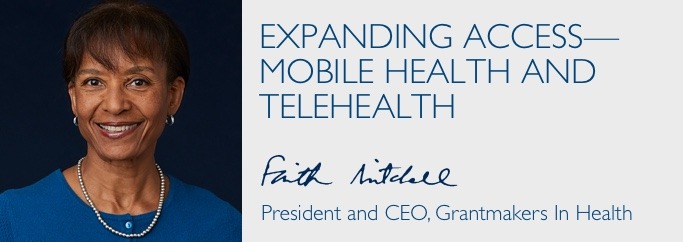
In September, I delivered a keynote speech at the Annual Mobile Health Clinic Conference of the Mobile Healthcare Association, and the occasion was an opportunity for me to learn more about the contributions of mobile clinics to population health and the delivery of safety-net services. As I learned, mobile clinics significantly increase access to services for certain populations. Many funders recognize this and support their work. There are also aspects of mobile health in which funders are less invested that, if supported, could contribute to the effectiveness and reach of mobile clinics.
Although their role is relatively unsung, mobile units are a proven way of providing services to populations that are otherwise hard to reach because of geography, income, legal status, or a combination of these and other factors. For example, they can effectively:
- reach patients who may forgo preventive care because they cannot afford it or cannot get to a doctor’s office;
- reach highly vulnerable populations, like the homeless and immigrants; and
- chip away at barriers of fear and distrust by delivering medical care in familiar, curbside settings.
For one mobile clinic, a 2017 study reported that 12 percent of the patients learned about a previously undiagnosed condition, such as diabetes or glaucoma, and a quarter were referred to follow-up services. This shows the potential of mobile units to advance health equity by decreasing health disparities.
Although mobile vehicles can be costly, they lower the costs of care by serving as an alternative to emergency room visits. In this respect, a recent data review concluded that ultimately mobile health clinics “produce significant cost savings and represent a cost-effective care delivery model that improves health outcomes in underserved groups.”
Currently, philanthropic support for mobile services tends to focus on screening for, and treatment of, specific diseases; healthy food distribution; primary care delivery; and oral health care. There are several additional areas in which funders’ investments could support and expand the value of mobile services. These include:
- doing more to communicate the accomplishments of mobile health grantees;
- producing more evaluation data on the effectiveness of mobile units in improving health outcomes;
- expanding mobile services into other areas, such as COPD, heart disease, and other chronic conditions that go undiagnosed and untreated, especially in rural areas;
- increasing programs that target specific vulnerable populations, such as older adults, the homeless, veterans, and survivors of natural disasters;
- ramping up the number of vehicles of successful mobile unit programs; and
- combining mobile services with other priorities, such as health care for immigrants in underserved communities.
In addition to our interest in mobile health, we are also eager to explore what foundations have learned about how their support of the technology strategies loosely known as telehealth can increase the availability of health care services. We recently concluded a funder survey to ascertain the level of funder engagement in telehealth and the types of technology receiving support (e.g., videoconferencing, patient monitoring, mobile devices, etc.). The survey findings will build our understanding of new approaches to expanding access, to inform our work and yours. Stay tuned!

